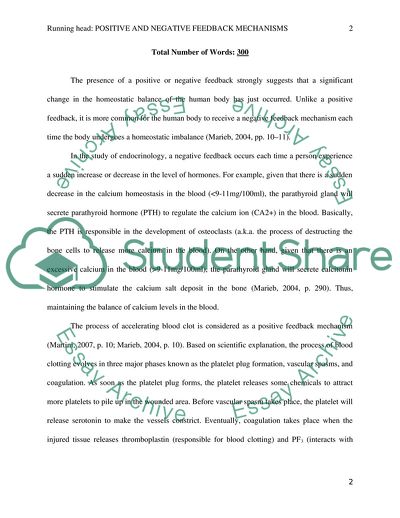Positive and Negative Feedback Mechanisms Endocrine System Example | Topics and Well Written Essays - 250 words. https://studentshare.org/medical-science/2106491-positive-and-negative-feedback-mechanisms
Positive and Negative Feedback Mechanisms Endocrine System Example | Topics and Well Written Essays - 250 Words. https://studentshare.org/medical-science/2106491-positive-and-negative-feedback-mechanisms.


